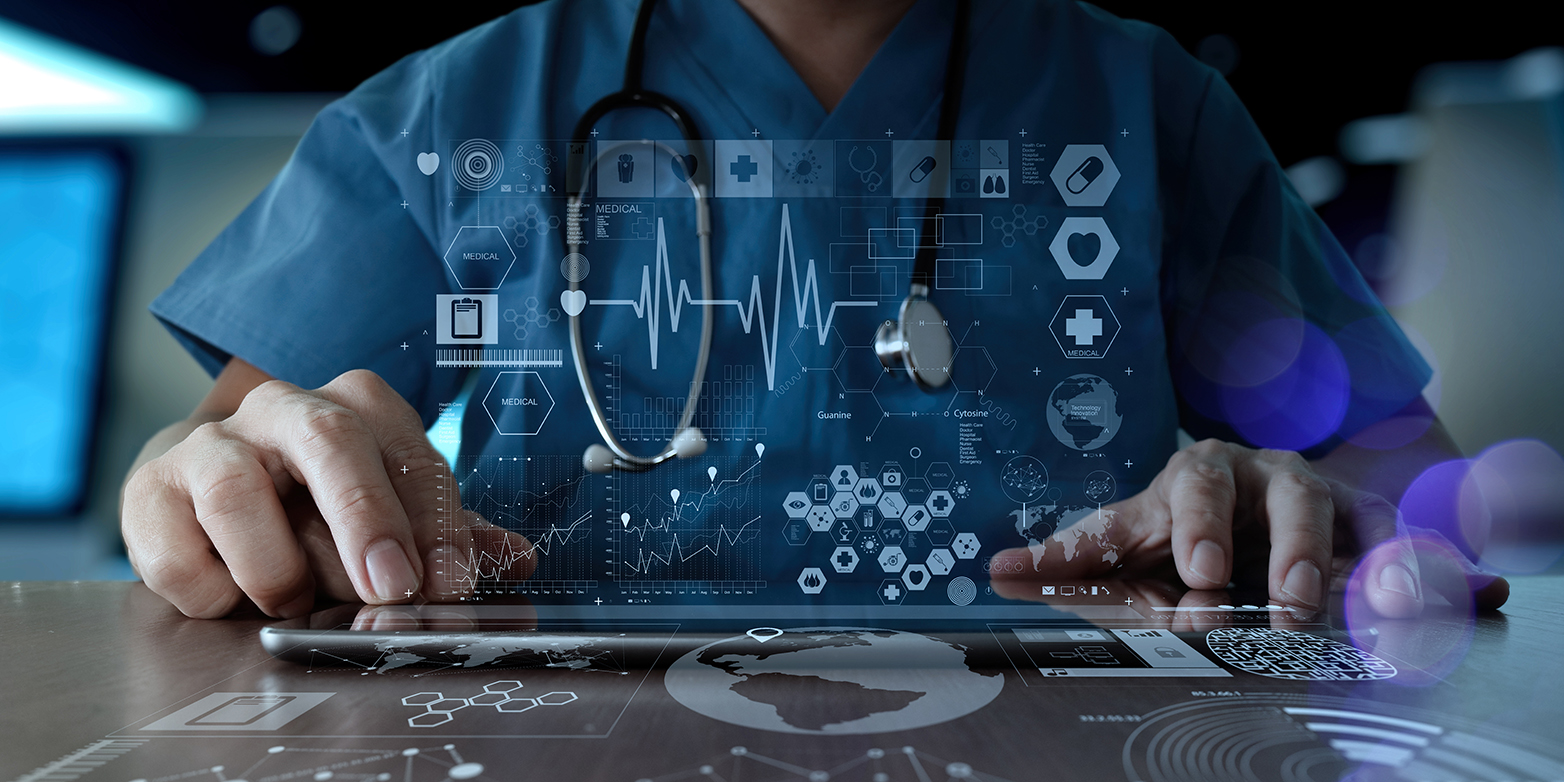Is medicine ready for artificial intelligence?
Artificial intelligence can help make medicine more efficient and safer. China is a forerunner in this field; we must not miss the boat, says Walter Karlen.

A few weeks ago, I zapped to the new Swiss TV show “Ärzte vs. Internet” (Physicians vs. internet). On the show, two teams duel to correctly diagnose patients. I was very surprised to see that they were both human teams. The answers of the “internet” team were obviously only as good as the search terms they used to access information, and the logical deductions developed by humans.
But why didn’t the physicians compete against a machine? In emerging countries such as China where there is an acute shortage of trained doctors, “Doctor vs. machine” competitions are very popular. This is illustrated by the Chinese TV broadcast of the brain tumour diagnosis and progression prediction competition between a team of 25 expert doctors against the Biomind artificial intelligence (AI) system. The 2:0 win of the AI over the humans in analysing brain images gained high visibility in China, but went almost unnoticed in our regions.

I’m convinced that the clinicians in “Ärzte vs. Internet” routinely use clinical decision support (CDS) systems in their daily practice, whether consciously or not. In fact, decision support systems are already present in many health applications, usually in a very simple form. For example, every device monitoring a patient’s condition will produce an alarm to alert health care staff; in telemedical and emergency services, CDS assist phone operators in triaging callers; medication supply chain management rely on an automated analysis of stock and prediction of demand, etc.
China’s dominance
Since the idea of using computers to improve medical services was introduced over 50 years ago, CDS has gone through regular cycles of hype and disillusionment where developments seem to stagnate. Most of these are regional, as is currently the case: whereas the recent layoffs at IBM Watson Health illustrate the struggle of Western companies with AI in medicine, the Chinese are celebrating achievements of medical AI companies, such as robots passing medical exams, and implementation into entire hospital systems, as recently announced by Guangzhou Second Provincial Central Hospital where surgery supplies are automatically dispatched and patients pre-screened.
"We can’t miss the opportunity for automation if we want to make personalised medicine a reality."Walter Karlen
The benefits of CDS are evident. Humans, including trained clinicians, are poor performers when it comes to assessing many data dimensions at the same time: we do not integrate data well and tend to interpret negatively. On the other hand, in their current form, machines are still poor in interpreting contextual situations and dealing with uncertain situations, and therefore dependent on access to high quality and quantity of data. Humans make errors, and so will the machines. In general, if identified early, a good clinician can redress a mistake. Current, non-AI based CDS do not have the capacity to predict intervention outcomes; this is the main reason these systems operate in an open loop where clinicians are the central part of the loop.
More accurate and safer
While in the past many systems and approaches have been explored in an academic environment, their adoption into medical practice has been very slow. The main reason being that neither health systems nor humans were ready for it. After all, like other medical devices, CDS need an appropriate design: they need to fulfill the high medical standards and performance requirement, fit into local cultural, ethical, regulatory, and organisational settings, be cost effective, and have a sustainable business model. This will also hold true for the new AI-based generation of CDS which may indeed have the capacity to deliver more accurate diagnoses than humans.
The inherent goal of automation in health care, however, is more profound: to improve the quality and safety of services. Medicine has already an established safety culture and is consequently ready for better and safer systems. If we can demonstrate that automated systems consistently increase patient safety, then any discussion of if and when CDS should be used to replace doctors is unnecessary.
No personalized medicine without AI
The harsh reality is that without CDS and intelligent agents, our health system will simply grind to a halt. The staff in intensive care units are already overwhelmed with biosignals to interpret and alarms to silence; very soon, this burden will reach other specialist and general practitioners who will be bombarded with data from wearables, genetic tests and other biomarker results that must all be integrated into a diagnosis, and treatment decisions made within 10 to 30 minutes of meeting a patient. We can’t miss this opportunity for automation if we want to make personalised medicine a reality. This data will have to be processed, classified, and analysed by automated algorithms.
And this leaves the big questions, which are not mine to answer at this time, but for public debate. In the future, who will have the final word in a clinical decision delivered by a computer? Will the all-knowing machine be closing the loop, or will the wise clinician still have a role to play? Will the insurance companies or the hosting hospital be the ones to configure the algorithms, and will the patient still have a say?
Digital Health
On September 7 and 8, ETH Zurich will focus on the topic of digital health. The latest products developed by ETH researchers and ETH spin-offs can be experienced in a digital exhibition in the main hall of the main building. In parallel, experts from society, health care, industry, research and policy are discussing digitisation in medicine.
The exhibition is open to spontaneous visitors: on Friday, 7 September from 5.15 pm to 8 pm and on Saturday, 8 September from 9 am to 4 pm.
More information can be found here (in German)
Comments
No comments yet